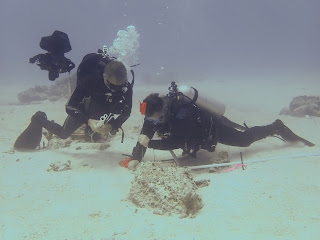The Stellwagen paper: part 2

Friends, I am proud to announce yet another paper resulting from my research has been published. This one is actually a great source of pride for me, because it represents the culmination of all the research my team undertook in Stellwagen Bank National Marine Sanctuary in 2019-2020. We used remotely operated vehicles to survey four shipwrecks: the steamship Portland , an unidentified 19th century coal schooner, and the interlocked coal schooners Frank A. Palmer and Louise B. Crary . The project launched Team Shipwreck and exposed me to the power of telepresence outreach. Calvin and me on board R/V Dawn Treader during 2019 field operations. This photo is entirely candid, but my excitement is palpable. Photo by Liz Weinberg (NOAA). What I'm most proud of is the framework that my team developed for shipwreck research. Every time we went out to sea, Calvin and I would sit right next to each other. At first, our conversations were essentially in parallel - he would notice some...

